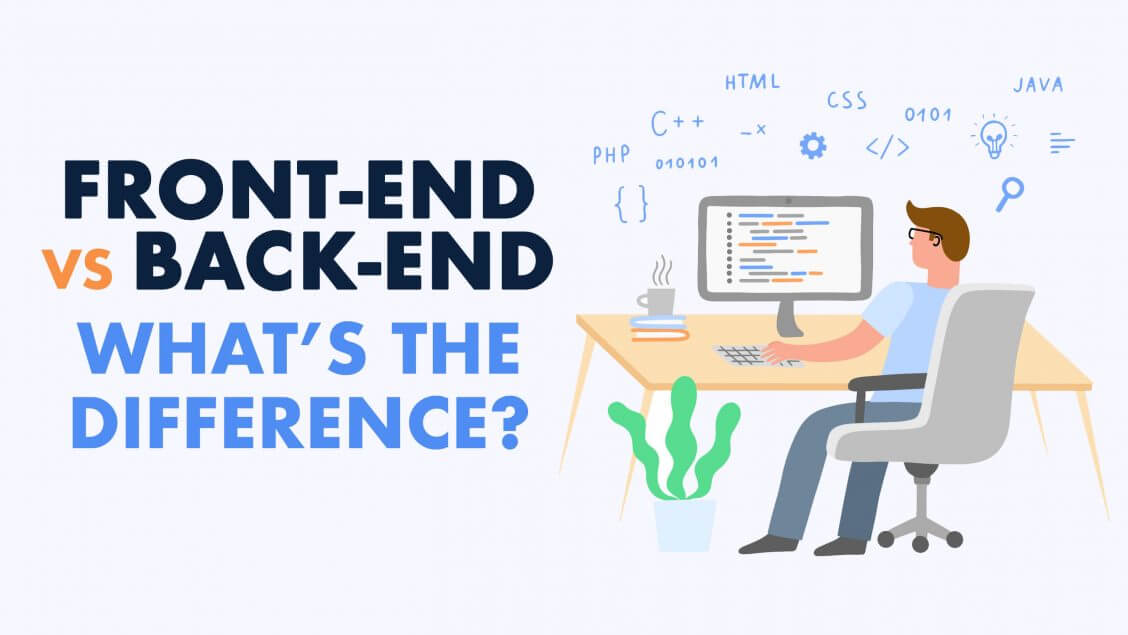Software development has its own unique language that can leave the average person feeling confused when talking to developers. However, you must understand these terms so you can communicate with developers effectively.
Effective communication leads to high-quality software development and means you get the perfect product for your business. Today we’re focusing on demystifying the language around the front end and back end development. Let’s take a look.
🤔 Front End Vs Back End - What's the Difference?
The front end, or client-side, is everything that the user can see and interact with. Things like the layout of the website or app, the fonts and colours used, contact forms, menus, and so on, would all be considered the front end because they are all part of the user interface.
The back end, or server-side, refers to the infrastructure that’s working behind the scenes to run the website or application. Users don’t have any sight of the back end, but it’s still critical for the software to function. This infrastructure can refer to servers, databases, or frameworks that communicate with the front end to deliver information to the user.
To break front end vs back end down into even simpler terms: If the system was a car, the front end would be the seats, steering wheel, and gear stick. The backend would be the engine, the gearbox, and wheels. The driver interacts with the front end (delivering data) and the backend processes this data and puts it into action.
✨ Why It's Important to Understand the Difference Between Front End and Back End When Talking to Developers
It’s important to understand the distinction between these two terms so you can keep the conversation focused on your development goals and have greater control over the development process. There’s little point in talking to a front end developer about what server size you need. Likewise, there’s little point talking to a back end developer about the layout of your application. This only applies when a developer is a dedicated front end or back end developer. In recent years there’s been a push for “full-stack” developers. These are developers who are skilled in front and back end development.
🙋 Front End: Common Terms You'll Hear
User Experience (UX): This refers to how the user actually experiences the website. Does the website flow? Does the user have to click through an obnoxious amount of pages to get where they want?
CSS, HTML, Javascript: These are the most popular front end programming languages. These languages are used to deliver the design, colours, typography, scrolling effects, moving elements, pop-ups, and slideshows on the website or software.
User Interface (UI): This refers to the overall look and feel of the website. Is branding consistent? Do the colours work? Is the application visually pleasing?
Wireframes: These are essentially blueprints of the website or app. Their role is to provide a quick visual guide of the layout of the site or app before development begins.
🔧 Back End: Common Terms You'll Hear
Database: where the data from your software or website is being stored.
Node JS, Python, Ruby, PHP, C# : these are common back end programming languages.
MySQL, Oracle, MongoDB, MsSQL: These are the most popular databases.
These lists of terms aren’t exhaustive but rather meant as a quick crash course in front end and back end development terms.
🚀 Go beyond theory
Use these new knowledge to work with us and create your very first custom software. Get in touch with us today !
